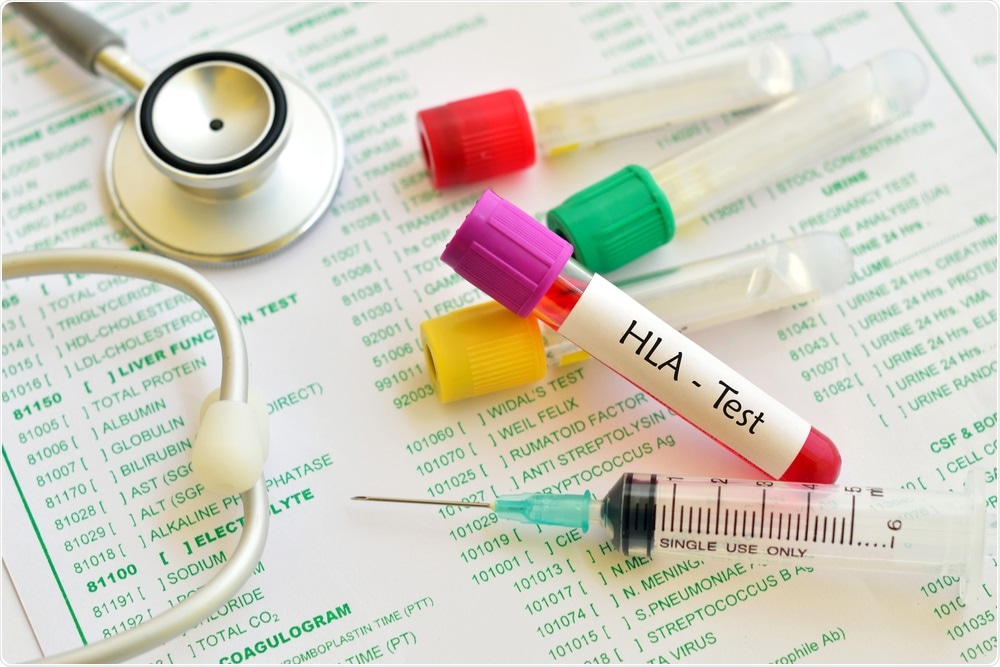According to a study recently published in the eLife journal, researchers have devised a new method to chart the molecules present on tumor cells that indicate their presence to the immune system.

Image Credit: Jarun Ontakrai/Shutterstock.com
Thanks to this discovery, oft-used immunotherapy therapies may prove effective for a relatively larger population of patients suffering from cancer.
A few immunotherapy treatments for cancer operate by targeting peptides—short bits of proteins—that are visible on the surface of the cancer cells. Many different types of human leukocyte antigens (HLAs) are responsible for presenting these peptides on the surface of the cells.
But studies relating to immunotherapy treatments are likely to target only a small subset of HLAs. Since these HLAs are not produced by all cancer patients, existing HLA-based immunotherapies do not benefit these individuals.
Most studies have focused on HLA proteins that are commonly found in the general population. We have developed a new technique that allows the sampling of underrepresented HLA proteins to find peptides or antigens that can induce an antitumor immune response. We can then stimulate the patient’s own immune cells with those peptides and give them back to the patient to help treat their cancer.”
Kenji Murata, Study Co-First Author and Postdoctoral Fellow, Princess Margaret Cancer Centre, University Health Network
For their study, the researchers initially extracted white blood cells, also known as T cells, from eight melanoma patients. This group of patients covered 25 different types of HLAs, which enabled the researchers to study the interactions of T cells with over 800 different antigen peptides.
All the eight samples collected from the patients were positive for a minimum of one of the peptide-HLA combinations. The techniques developed in this study also enabled the researchers to identify new peptides detected by the T cells.
The researchers further investigated whether the T cells that responded to the peptides are likely to trigger an immune response by quantifying the production of interferon—an immune-activating molecule.
Except for the two antigens, all the remaining ones activated the T cells to create interferon and also stimulate the cells to grow in numbers.
Such effects were rendered more powerful by introducing another type of cell to the T cells—that is, an artificially engineered antigen-presenting cell (APC) bearing the same type of antigen, which is a usual method to activate the T cells.
In the subsequent stage, the researchers employed the artificial APCs to identify the precise immunogenic signal that activated the T cells from patients suffering from melanoma. They discovered new fragments of peptides associated with two different types of antigens, referred to as NY-ESO1 and MART1, in which immunological hotspots are known to exist.
Next, the scientists explored whether T cells could be engineered to target these new antigens by isolating cells that react against the new antigens and then cloning their T cell receptor (TCR) genes. TCRs are essentially cell-surface proteins that enable the T cells to respond to the antigens.
When we added these cloned TCR genes back into newly isolated T cells, we found that the cells were able to recognize and react to the tumor cells.”
Munehide Nakatsugawa, Study Co-First Author and Former Postdoctoral Fellow, Princess Margaret Cancer Centre, University Health Network
“By querying human melanoma-derived T cells and using novel HLA proteins bearing common tumor antigens, we have been able to discover both new and existing immunologically active antigens in tumors,” stated Naoto Hirano, the study’s senior author and senior scientist at the Princess Margaret Cancer Centre.
Our strategy allows for a more complete examination of the immune response and development of novel cancer vaccines and immunotherapies for a broader group of patients not limited by HLA prevalence or tumor mutation burden.”
Naoto Hirano, Study Senior Author and Senior Scientist, Princess Margaret Cancer Centre, University Health Network
Source:
Journal reference:
Murata, K., et al. (2020). Landscape mapping of shared antigenic epitopes and their cognate TCRs of tumor-infiltrating T lymphocytes in melanoma. eLife. doi.org/10.7554/eLife.53244.